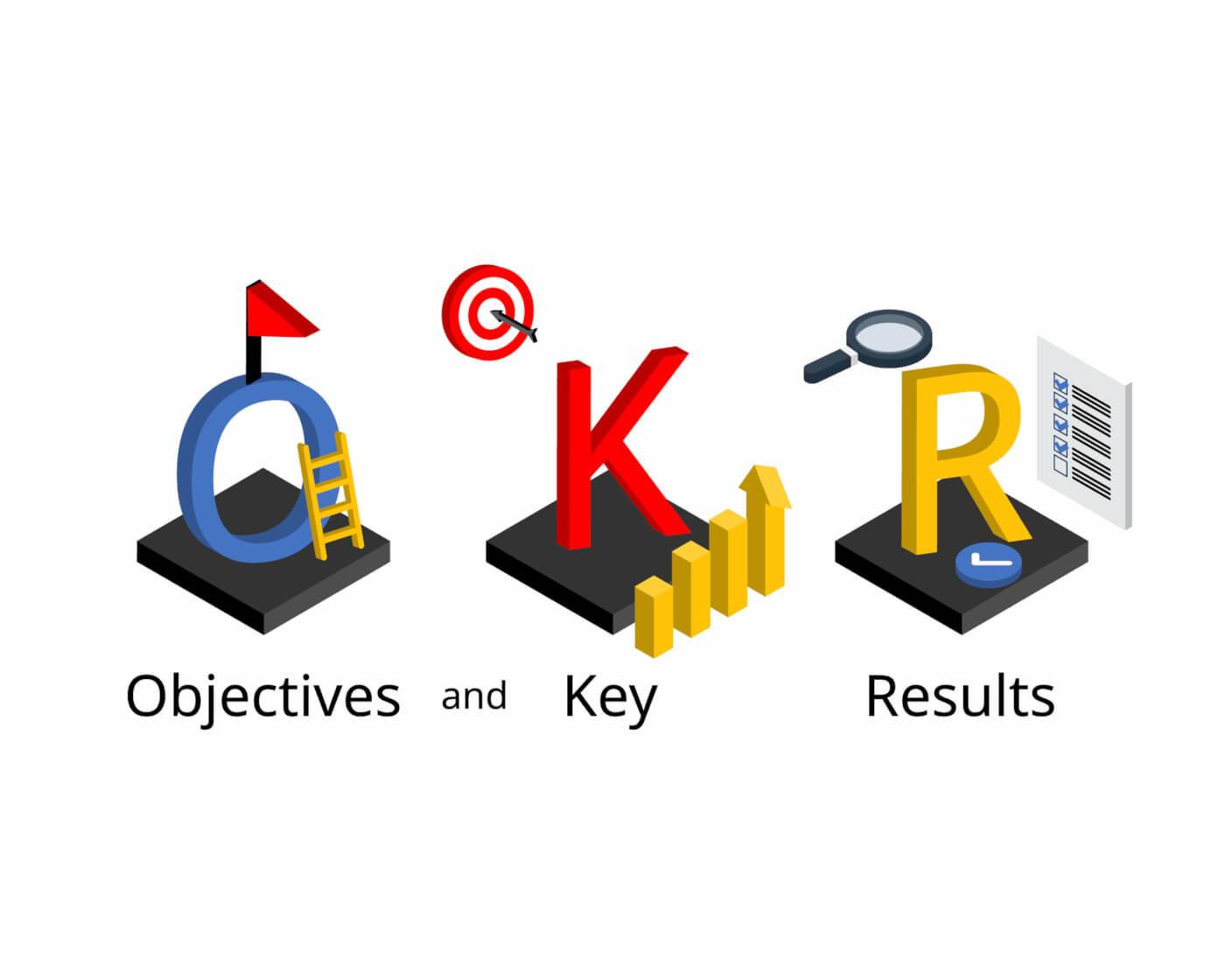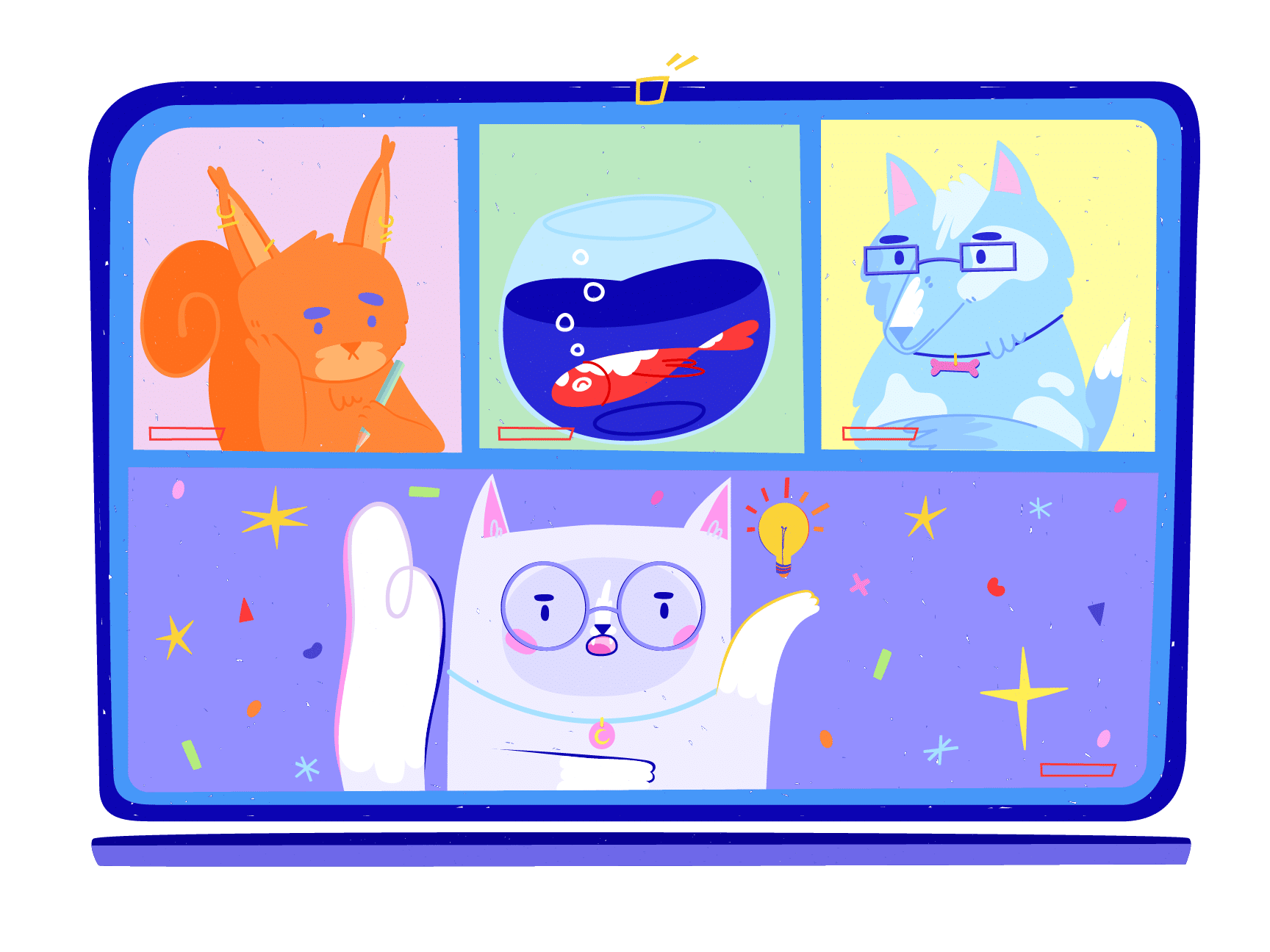Being a leader means that you’re responsible for making key decisions that can make or break your company. But how can you do that confidently? The short answer is — OKRs. OKRs (Objectives and Key Results) are one of the most popular goal-setting methods around.
Big corporations such as Amazon, Dell, Netflix, and Microsoft use OKRs to drive results. And so can you. But you don’t have to spend millions to follow in their footsteps. In today’s article, you’ll learn what OKRs are and how to use them properly as part of your company strategy.
💡 Before you start... Want to set your up for success? Check our articles on the best project management tools and project management basics when you’re done reading.
🤔 What Are OKRs?
OKRs, an acronym for Objectives and Key Results, originated at Intel under the leadership of Andy Grove, who was the company’s CEO in the 1970s. Grove developed this goal-setting framework to structure and refine goal setting and tracking at the company.

Drawing parallels with SMART goals, OKRs promote setting targets that are specific, measurable, achievable, relevant, and time-bound. This drives a performance-focused environment, where employees have a clear understanding of how their work is contributing to business priorities.
What makes OKRs different from other goal-setting methods is that OKRs place an emphasis on tracking measurable results and connecting team and company-wide objectives. This approach ensures every level of the organization is working towards the same priorities.
OKRs are set every quarter by the senior management, in line with the overall company strategy. Once that’s done, it’s up to each team within the organization to figure out the best way to achieve their team-specific OKRs, contributing to the broader business objectives.
And now let’s look at all the steps and elements involved in setting OKRs.
🍰 What Components Do OKRs Contain?

The OKR methodology is easy to understand as it consists of only two major components: Objectives, and Key Results. An Objective is the main direction or goal that you want to achieve, and Key Results are the measurable steps that you will take to make sure that you’re on track to achieve your Objectives (Goals).
What Are Objectives in OKRs?
Objectives refer to the main SMART goals that you want your company to achieve. As a rule of thumb, every objective will be accompanied by three to five Key Results to ensure that they are achievable.
It is important to set ambitious yet achievable goals when it comes to setting objectives in OKRs. You want to challenge your team and at the same time not dent their motivation with unrealistic expectations.
Simply put, Think of Objectives as “What do I want to achieve with my business”? Setting clear and concise objectives is important so that your team is crystal clear on the role that they play in the organization.
What Are Key Results in OKRs?
After goal-setting via your Objectives, Key Results are used to chart out your path to achieving your goals. Think of it as the smaller steps you have to take to achieve your overall goal.
Each Objective should have 3 to 5 Key Results pegged to them. These Key Results should also have an indicator to allow teams to track their overall progress on a scale of 0-100%
To summarize, Key Results are measurable steps in ensuring that your business achieves its Objectives.
📊 How Do You Measure Success for Your OKRs?
OKRs are unique because achieving 100% on a Key Result is actually not ideal. It basically just means that your goals were too easy and that you were underutilizing your resources.
Getting 100% on a Key Result means that you should have set more ambitious OKR objectives.
The benefits of OKRs are that they allow you to set stretch goals, while also providing a clear roadmap to achieve them. The OKR framework enables better alignment, focus, and employee engagement across the organization.
The best practice for OKR success is to aim for at least 70% completion. Once you hit at least 70% you would have achieved your OKRs. On the other hand, scoring around 40% would mean that your goals were too much of a stretch goal for your team to accomplish.
Generally, OKRs are not done in short sprints. Instead, OKRs are ambitious goals that take some time to achieve. Typically, OKRs can run for more than a quarter, with monthly check-ins from the management to check the team’s progress. The OKR goal-setting framework is adaptable to different timeframes and business needs, making it a flexible tool for driving success.
🤹♀️ Examples of OKRs
OKRs are extremely flexible, which makes them a versatile goal-setting tool that can be customized to suit the unique needs and objectives of different departments and teams within an organization. Here are two OKR examples that will help you get a better grasp of the method.
Sales Department
- 🎯 Objective: Increase sales revenue
- 🟢 Key Result 1: Close 15% more deals than last quarter by enhancing sales strategies and improving closing techniques.
- 🟠 Key Result 2: Increase the average deal size by 10% by focusing on selling higher-value packages and upselling where possible.
- 🔴 Key Result 3: Reduce sales cycle length by 20% through streamlining processes, improving lead qualification, and providing faster follow-ups.
In the example above, OKRs are used to drove sales growth by addressing different aspects of the sales process, including closing rates, deal size, and sales cycle efficiency. They provide a clear roadmap for the sales team to work towards achieving the desired revenue increase.
Marketing Department
- 🎯 Objective: Enhance brand visibility and reputation
- 🟢 Key Result 1: Boost website traffic by 25% by optimizing SEO, increasing content marketing efforts, and leveraging social media channels.
- 🟠 Key Result 2: Increase social media followers by 30% by engaging with the audience through regular posts, interactive content, and social media campaigns.
- 🔴 Key Result 3: Secure 5 features or mentions in industry-leading publications by building relationships with industry influencers, leveraging PR strategies, and producing high-quality, newsworthy content.
OKRs can also be used to enhance marketing department’s efforts in building brand visibility and reputation. By focusing on website traffic, social media engagement, and media exposure, the marketing team can effectively reach a wider audience and strengthen the brand’s image.
Want to track OKRs in a similar format? Grab our free OKR template and get started today!
🚀 Benefits of Using an OKR System
There are a lot of benefits that come with using OKRs to set goals for your business. Here are some examples of how it can benefit your company:
- Improved collaboration: By setting measurable objectives and key results, everyone on your team can stay on the same page and understand their role in the company. This allows employees to focus on achieving the same common goal.
- Better employee engagement: Employees perform best when they’re motivated to work. OKRs help increase commitment by providing a sense of purpose and direction. Teams can stay motivated and engaged when they have clear and attainable goals to work towards.
- Enhanced communication: OKRs help to establish clear communication in your company. One of the main pillars of successful OKRs includes transparency and regular check-ins to ensure that everyone is on track. This helps promote clearer communication as your team progresses toward achieving its key objectives.
- Saves time: By breaking down your goal-setting process into objectives and key results, OKRs help you save time via a streamlined goal-setting process. This helps you save time by prioritizing only goals that have the most impact on your company.
In short, OKRs are a great way to help you and your team stay focused and motivated. Regardless if you’re a startup or a large corporation, OKRs help you progress towards your goals and objectives efficiently.
🥊 How Do OKRs Compare to Key Performance Indicators (KPIs)?
Before we can compare the two, we first need to understand what a KPI is.
What Is a KPI?

KPI stands for Key Performance Indicator, and it is a metric used to measure the performance of a business or organization. KPIs are used to track progress toward specific goals and objectives, which can help organizations measure their success and make informed decisions.
A good KPI will be specific, measurable, and time-bound, and will provide clear and actionable data. By regularly measuring and tracking KPIs, businesses can track their progress and make adjustments as needed.
This in turn gives businesses greater insights into their progress and helps them to make better decisions.
Which Is better, OKRs or KPIs?
While both OKRs and KPIs can be useful, there is no one-size-fits-all answer to the question of which is better. It really depends on your business needs and the goals you’re trying to achieve.
OKRs are a great way of setting and tracking ambitious goals, while KPIs can give you an in-depth understanding of the performance of an individual or your whole team in general.
Generally, OKRs will be used to set organization-level objectives, while KPIs are more geared towards smaller teams and individuals. The best practice when it comes to OKRs and KPIs is to use both in tandem depending on what you need them for.
Both tools are useful and can when used correctly can be beneficial both to you and your business.
👋 Parting Words
Learning how to use OKRs to make good decisions is just the first step in ensuring success for your business. You need to use it consistently to steer your team in the right direction.
And if you still need some, try Taskade!
🤖 Custom AI Agents: Develop AI agents to help define, track, and achieve objectives, streamlining goal-setting and prioritization.
🪄 AI Generator: Use AI to generate a structure for all your projects, ensuring each objective is ambitious yet attainable and aligned your goals.
✏️ AI Assistant: Use handy /AI commands inside the project editor to supercharge daily business activities, powered by GPT-4 Turbo.
🗂️ AI Prompt Templates Library: Access a wide range of AI prompts to kick-start and optimize all kinds of workflows.
And much more…



 What Are Gantt Charts? Simplifying Projects with Visual Planning
What Are Gantt Charts? Simplifying Projects with Visual Planning  Effective Project Management Strategies for Healthcare Professionals
Effective Project Management Strategies for Healthcare Professionals  Enhancing Team Collaboration and Productivity with Taskade AI
Enhancing Team Collaboration and Productivity with Taskade AI  How to Write a Project Plan – The 7 Core Components
How to Write a Project Plan – The 7 Core Components  Best Agency Management Software
Best Agency Management Software  What Is Scope Creep and How Can It Be Managed?
What Is Scope Creep and How Can It Be Managed?